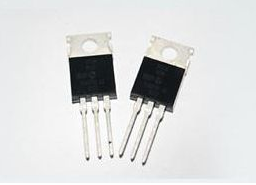Generally, when we do circuit design, the triode switch circuit and the MOS tube switch circuit have the following four differences: first, the triode is controlled by current, and the MOS tube is voltage controlled; then the cost problem, the triode is cheap, the MOS tube is expensive; the second is Power consumption problem, triode loss is large; finally, drive capability, MOS tube is often used for power switch, and high current place switch circuit. In fact, the triode is relatively cheap, easy to use, and is commonly used in digital circuit switching control.
MOS tubes are used in high frequency, high speed circuits, high current applications, and where the base or drain control current is sensitive. Generally speaking, in low-cost applications, triodes are considered for common applications, and MOS tubes are not considered. In fact, it is wrong to say that current control is slow and voltage control is fast. To understand the way in which bipolar and MOS transistors work, you can understand.
The triode is operated by the motion of the carrier. Taking the npn tube emitter follower as an example, when the base is not applied with voltage, the pn junction composed of the base region and the emitter region is blocked by multiple ions (the base region is a hole). The emission region is an electron diffusion motion, where the pn junction induces an electrostatic field (ie, a built-in electric field) directed from the emitter region to the base region. When the base is applied with a positive voltage, the base region points to the emitter region. When the electric field generated by the applied voltage of the base is greater than the built-in electric field, the carriers (electrons) in the base region may flow from the base region to the emitter region. The minimum value of this voltage is the forward conduction voltage of the pn junction (it is generally considered in engineering) 0.7v). However, at this time, there is a charge on both sides of each pn junction. At this time, if the collector-emitter is positively charged, the electrons in the emitter region move toward the base region under the action of the electric field (actually, the opposite direction of the electron moves. ), because the width of the base region is small, electrons easily cross the base region to reach the collector region, and recombine with the holes of the PN here (near the collector), in order to maintain the balance, under the action of the positive electric field, the collector region The electron accelerates the movement of the outer collector, while the cavity moves at the pn junction, a process similar to an avalanche process. The collector's electrons return to the emitter through the power supply, which is how the transistor works.

When the triode is working, both pn junctions will induce a charge. When the switch is in the on state, the triode is in a saturated state. If the triode is turned off at this time, the charge induced by the pn junction should be restored to equilibrium. This process takes time. The MOS transistor works differently and does not have this recovery time, so it can be used as a high-speed switch.
The FET is a voltage control element and the transistor is a current control element. In the case where only a small current is allowed from the signal source, the FET should be used; and when the signal voltage is low and the current is taken from the signal source, the transistor should be selected.
FETs use majority carriers to conduct electricity, so they are called unipolar devices, and transistors have both majority carriers and minority carriers. It is called a bipolar device.
Some FETs have interchangeable source and drain, gate voltage can be positive or negative, and flexibility is better than transistors. The FET can operate under very low current and low voltage conditions, and its manufacturing process can easily integrate many FETs on a single piece of silicon. Therefore, the FET is obtained in large-scale integrated circuits. A wide range of applications.
Field effect transistors have the advantages of high input impedance and low noise, and are therefore widely used in various electronic devices. In particular, the field effect tube is used as an input stage of the entire electronic device, and it is possible to obtain a performance that is difficult to achieve with a general transistor.
Here, for the choice of FET, we can think that it is generally divided into two types: junction type and insulated gate type, and the control principle is the same.
High Voltage Power Resistor are designed to withstand and dissipate large amounts of power. Usually the releated power is at least 5watts and up to 500watts. It has Excellent high-frequency characteristics and suited for Radar system and Broadcasting transmit devices, .etc.
High Voltage Polypropylene Capacitor,High Voltage Tubular Resistor,HV thick-film Resistor,Thick Film Power Resistor
XIAN STATE IMPORT & EXPORT CORP. , https://www.shvcomponents.com